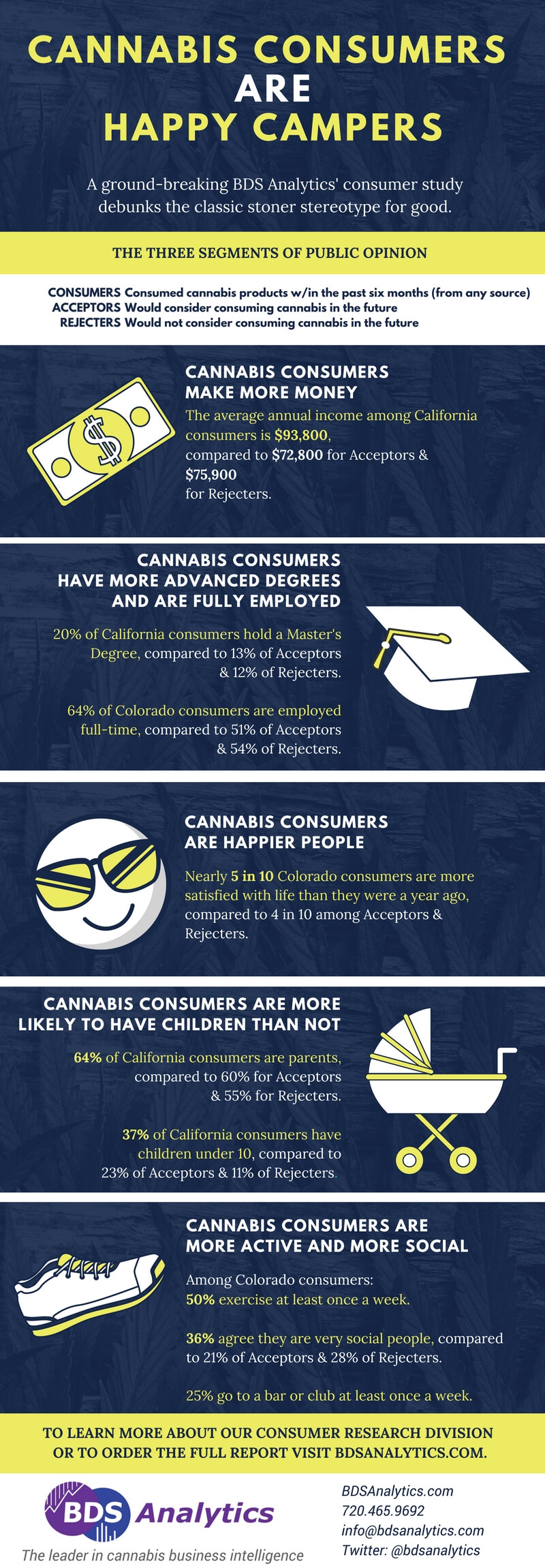We are a team of active participants. We enjoy the finer things in life. We work hard and enjoy the journey. We have families and routines, which we love to mix up with a little adventure. We are cannabis users.
There is a major discrepancy between the myth and the reality when it comes to who uses cannabis. While it is often hard to trace the birth of a stereotype, the stigma surrounding cannabis culture can be easily mapped.
Prohibition created an environment where propaganda and “reefer madness” reigned supreme, and embedded a language of fear into the western conversation around cannabis. While the news and government institutions worked furiously to condemn cannabis as a “gateway drug” or “the devil’s lettuce”, many regular Americans were turning on the plant for relief and recreation.
The hippy uprising of the 1960s stimulated the conversation, for better and also for worse. This new free-wheeling way of life paved the way for the birth of the “lazy-stoner”. This new facet to the stigma provided a whole new way for institutions to condemn cannabis.
While American tokers were confined to back-alleys and basements, a small group of advocates began to lobby and fight to expose the truth about cannabis – a beautiful gift from nature and the source of many beneficial medicines and healing properties.
As their work comes to fruition through legalization’s slow but steady chug across the Americas, the research being uncovered around who uses cannabis and why begins to tell a very different story than many people expect.
One major perk of legalization is the integration of cannabis into all verticals, including market data, research and analytics. Companies such as BDS analytics are dedicated to providing up-to-date information to cannabis businesses and government bodies, and have uncovered some very interesting realities about who is using cannabis in the US.
Here are some of the most interesting data points uncovered in their research (source).
Accomplished Personally and Professionally
- Average annual household income among California Consumers is $93,800, compared to $72,800 for Acceptors and $75,900 for Rejecters.
- The percentage of people holding master’s degrees among California Consumers is 20 percent, compared to 13 percent for Acceptors and 12 percent for Rejecters.
- Full-time employment is enjoyed by 64 percent of Colorado Consumers, compared to 51 percent of Acceptors and 54 percent of Rejecters.
Satisfied with Life
- Nearly five in 10 Colorado Consumers agree they are more satisfied with life today than they were a year ago, compared to about four in 10 among Acceptors and Rejecters.
Parents Raising Families
- Cannabis Consumers are the most likely segment to be parents in California: 64 percent of Consumers are parents, compared to 60 percent of Acceptors and 55 percent of Rejecters.
- In addition, Consumers in California are significantly more likely to have children ages 10 years or younger at home — 37 percent of Consumers compared to 23 percent of Acceptors and 11 percent of Rejecters
Active Socially and Creatively
- Among Colorado Consumers, 36 percent agree they are very social people, compared to 21 percent for Acceptors and 28 percent for Rejecters.
- Acceptors in Colorado were more likely to enjoy the fine arts and describe themselves as creative.
Enjoy the Outdoors
- When compared to Rejecters, Consumers in both Colorado and California say they enjoy outdoor recreation at a higher rate — 50 percent for Colorado Consumers compared to 36 percent for Colorado Rejecters, and 57 percent for California Consumers compared to 26 percent for California Rejecters.
Nurturing and Volunteers
- In California, 60 percent of Consumers agree that they are nurturing people, compared to 41 percent of Rejecters. Also, 38 percent of Consumers say they volunteer their time to help others, compared to 25 percent of Rejecters.

